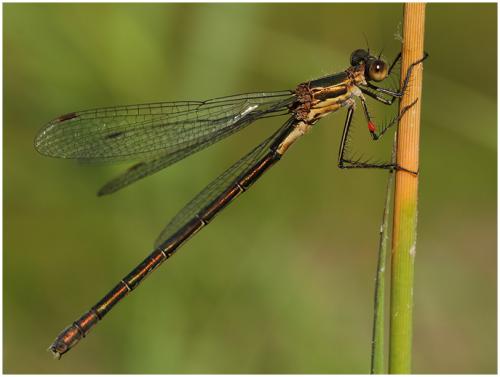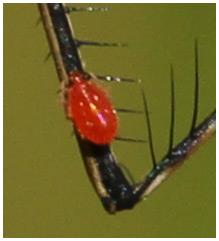J'ai fait quelques recherches et trouvé cet article : Rafał Bernard , Magdalena Felska , and Joanna Mąkol "Erythraeid larvae parasitizing dragonflies in Zambia—description of Leptus (Leptus) chingombensis sp. nov. with data on biology and ecology of host-parasite interactions," Systematic and Applied Acarology 24(5), 790-813, (8 May 2019).
https://doi.org/10.11158/saa.24.5.6.
Dans lequel on lit :
""The widest array of odonate hosts, known for Leptus (L.) killingtoni Turk, 1945, includes Orthetrum coerulescens, Pyrrhosoma nymphula, Ceriagrion tenellum, Coenagrion puella, Coenagrion mercuriale, Lestes sponsa, Enallagma cyathigerum, Cordulegaster boltonii, Anax imperator, Ischnura hastata, Ischnura pumilio and Sympetrum fonscolombii recorded in Great Britain and in the Azores, Portugal (Turk 1945; Killington & Bathe 1946; Lorenzo-Carballa et al. 2011; Kerry & Baker 2012; Kerry 2013; Cordero-Rivera et al. 2018)."
Il est donc fort probable que ce soit Leptus killingtoni (Turk, 1945).
Bravo.
Quand on voit ce qu'on voit et qu'on entend ce qu'on entend, on n'est pas surpris de penser ce qu'on pense.

